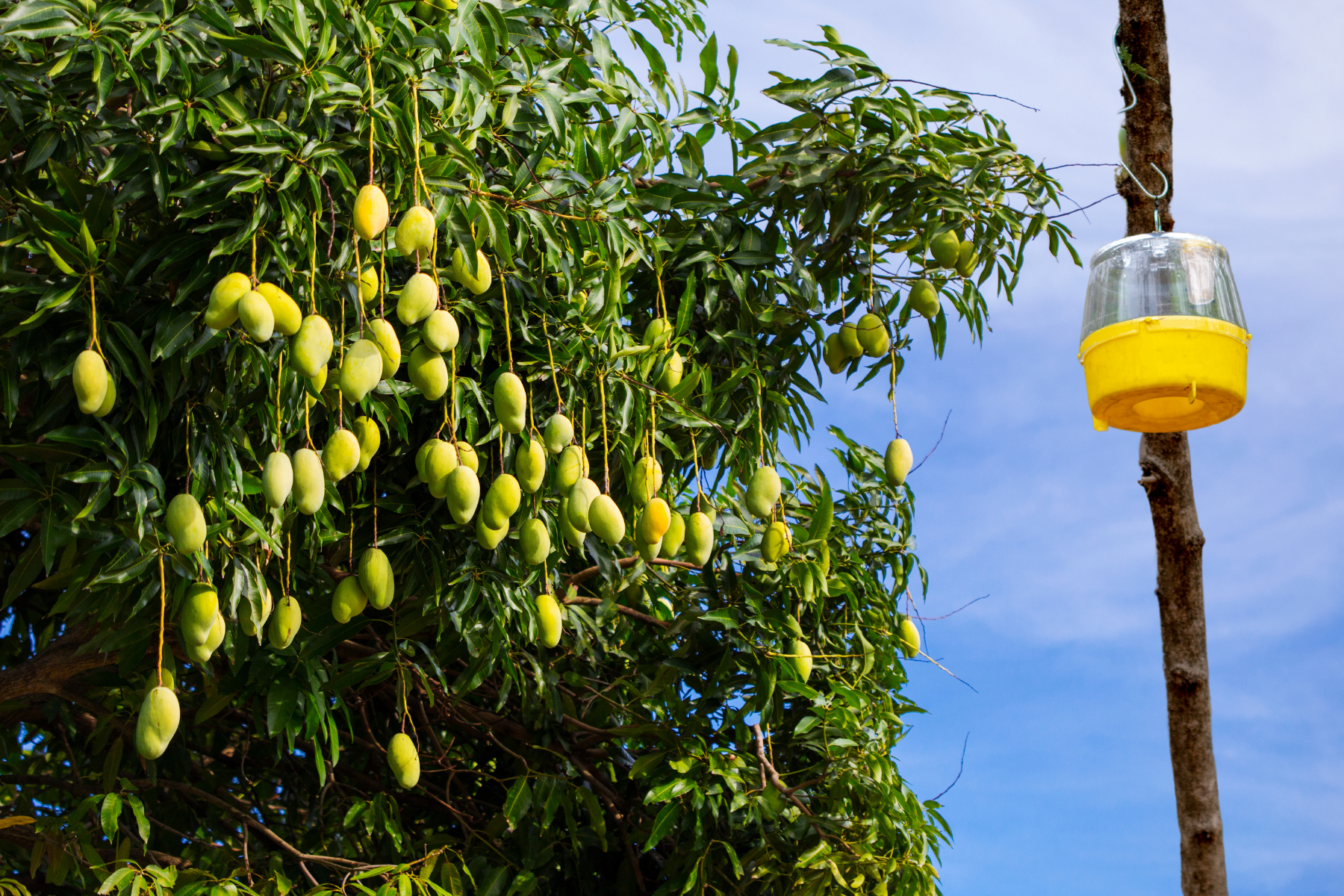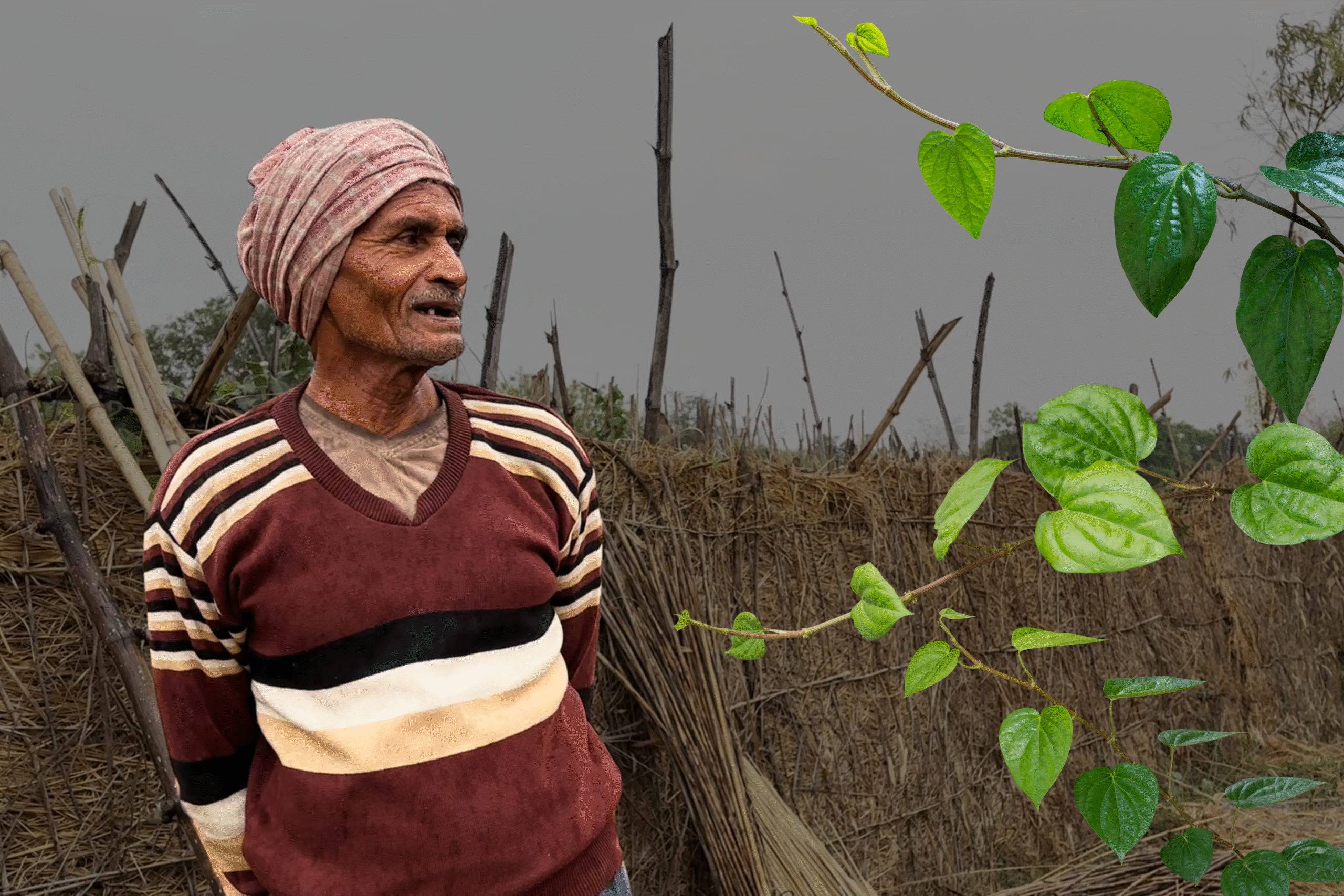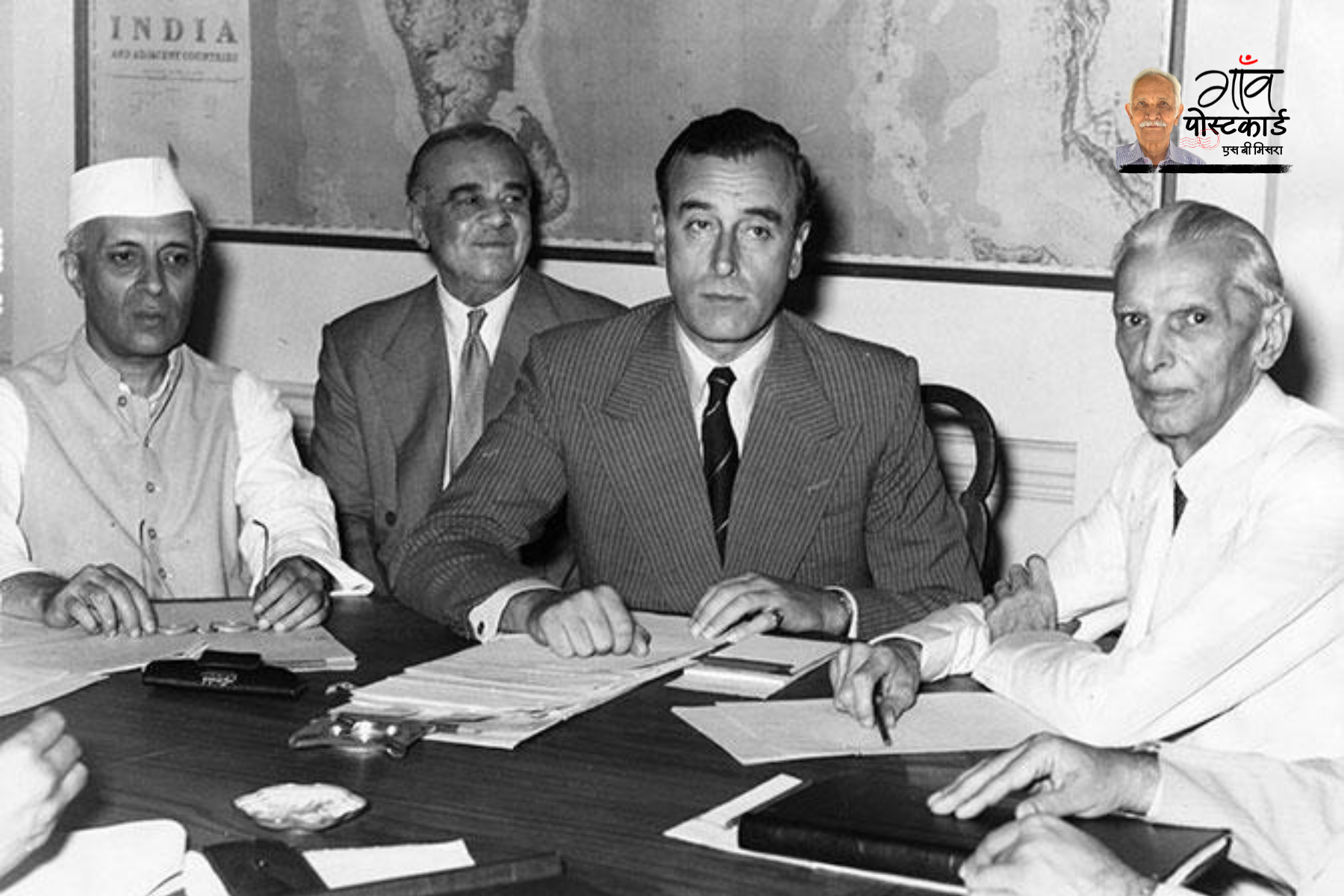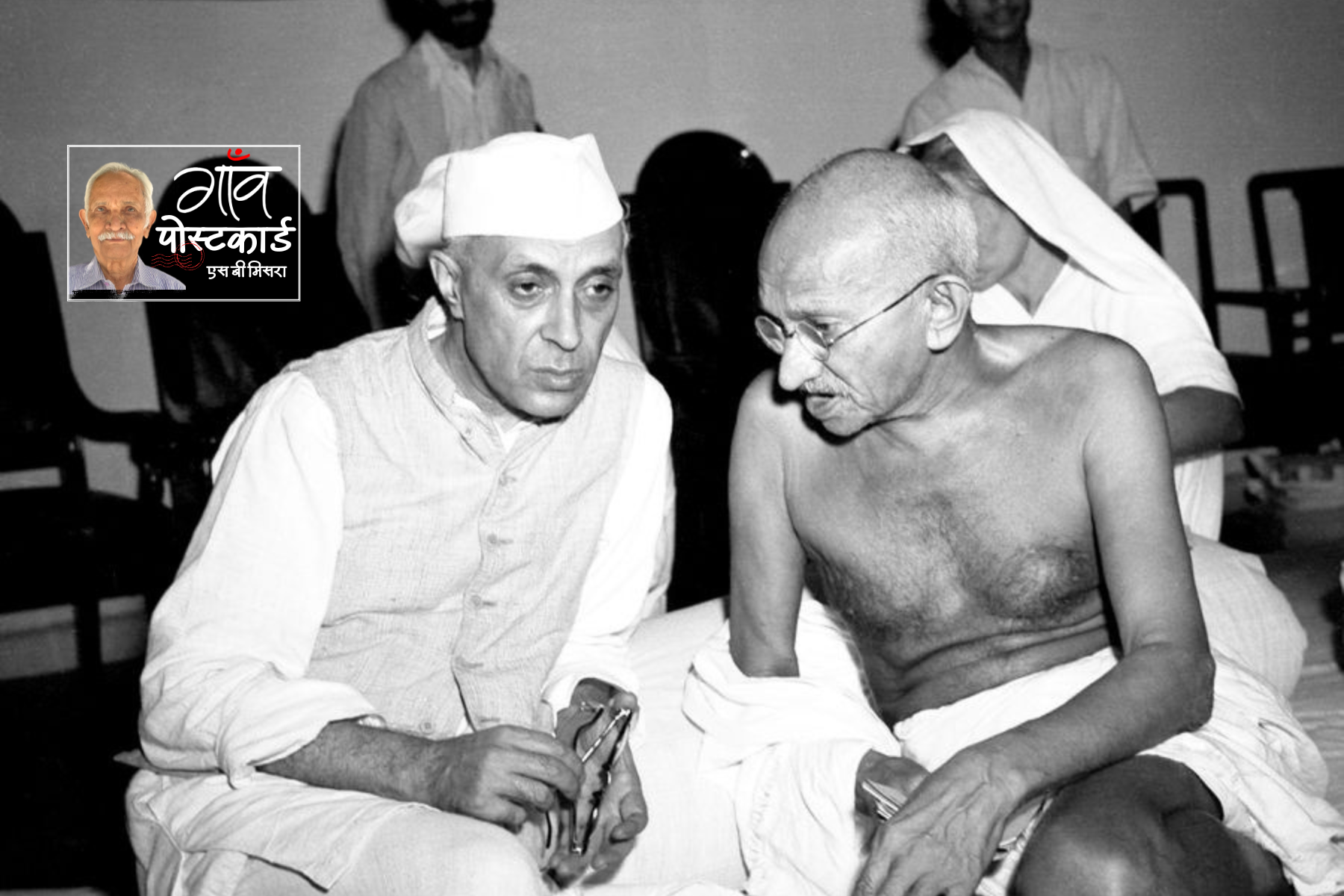Shivpuri, Madhya Pradesh
Ashok Kumar Tiwari is obviously in pain and speaks with some difficulty. “My bones hurt. I can’t chew food properly, my teeth have fallen out…,” the 60-year-old villager from Ghasarahi village told Gaon Connection. Joint pains are common in the inhabitants of the village, he added.
Ghasarahi village located in the rocky Shivpuri district in Madhya Pradesh is home to at least 500 villagers, all of whom are dependent on only two hand pumps which dispense water that has high levels of fluoride. Regular consumption of high fluoride water is linked to a number of diseases including the debilitating fluorosis.
Over the years, most of the villagers in Ghasarahi have rotting teeth, joint pains and skin eruptions, which the inhabitants blame on their contaminated water.
WATCH
As part of Gaon Connection‘s new series – Paani Yatra – our national team of reporters and community journalists travelled to remote villages in different states of the country to document how rural citizens are meeting their water needs in the scorching summers as the heatwave sweeps across large parts of the country.
Also Read: A Midsummer Pipe Dream: Pipelines laid down and taps installed, but where is the water?
This story from Shivpuri district in Madhya Pradesh, about 475 kilometres south of the national capital New Delhi, is the fourth in the series. Residents of Ghasarahi village are aware of the slow poison (fluoride) in their water but in the absence of any alternate safe drinking water source, they continue to consume the high fluoride water.
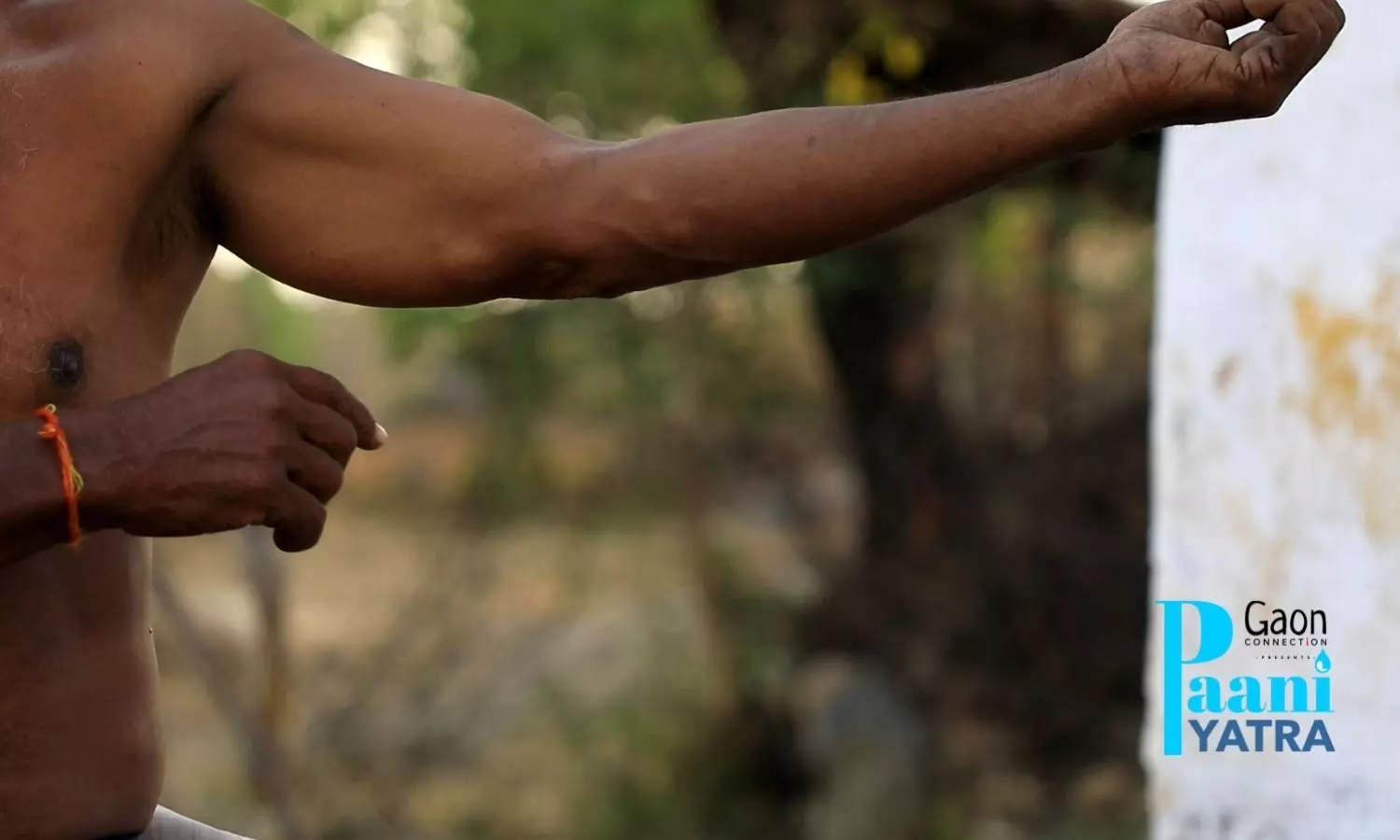
Lumps have developed on arms and abdomen of Ashok Kumar Tiwari. Photo: Yash Sachdev
“People say that fluoride is present in water here. We get water from the handpump. We use it for drinking purposes and our children also drink it,” Mithilesh, a resident of Ghasarahi village said. The 65-year-old complained that she has been suffering from knee and heel pain for over a decade now.
High fluoride related sufferings are not limited to the residents of a handful of villages in the country. As per a document of the Ministry of Jal Shakti, as of August 18, 2016, at least 10,615 habitations with a population of over 8.5 million (8,507,634) people in the country are affected by high fluoride water.
Another 13,000 habitations with over 13.2 million people have high arsenic in their water, which is linked to cancer (arsenicosis). As per the Indian drinking water standard, the permissible limit of fluoride and arsenic in drinking water is 1.5 milligrams per litre (mg/l) and 0.01 mg/l, respectively.
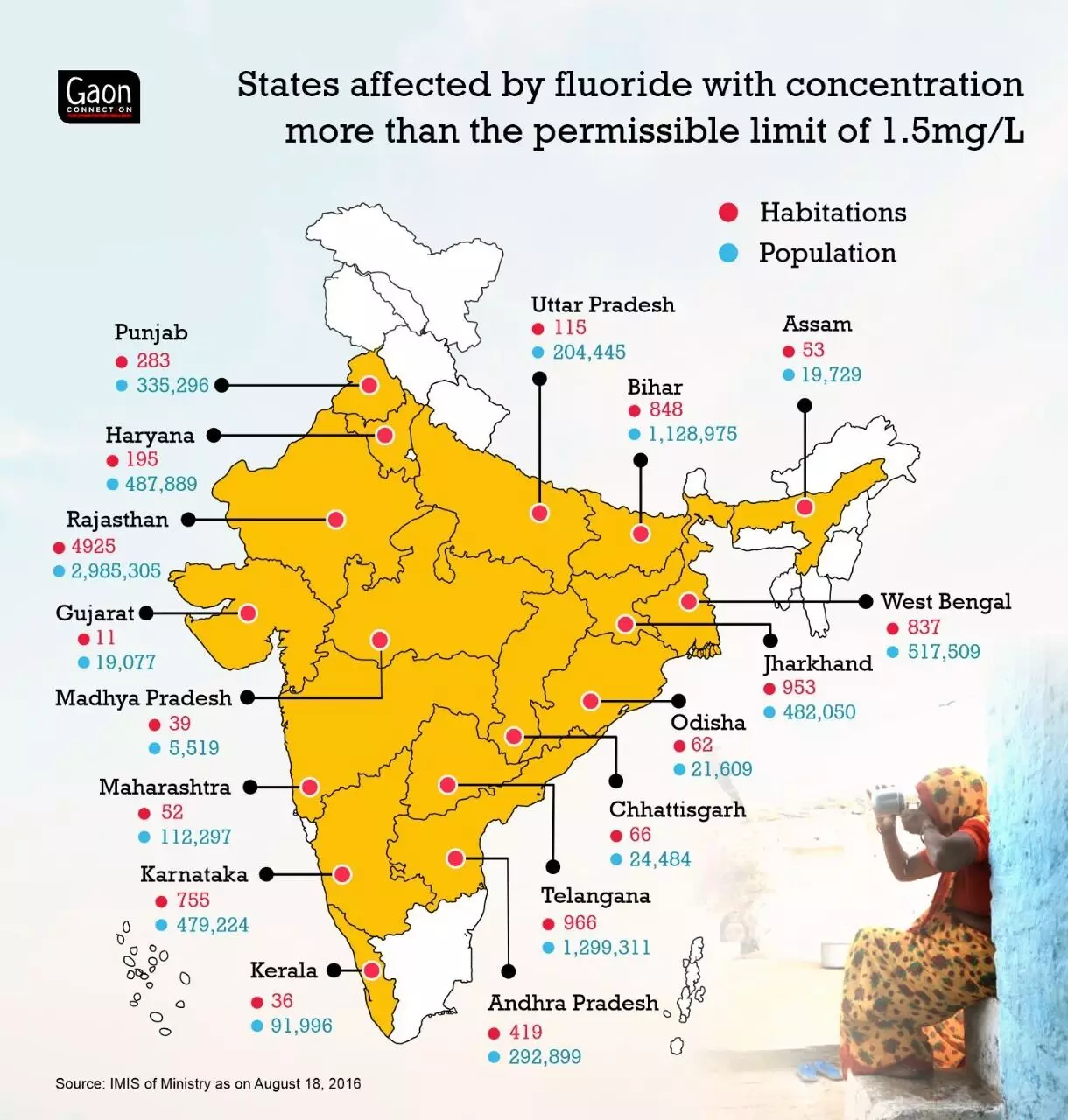
Dangerous contamination
According to the Ground Water Year Book-Madhya Pradesh (2020-21) under the Jal Shakti Ministry, the level of fluoride in drinking water has been found to be “very high” in several areas, notably in the districts of Seoni, Mandla, Jabalpur, Jhabua, Gwalior, and Shivpuri. The level is often in excess over the permissible limit.
Fluoride concentration of more than the permissible limit of 1.5 mg/l has been detected in Chhindwara, Datia, Dewas, Dindori, Khandwa, Mandsaur, Morena, Neemuch, Ratlam, Sehore, Tikamgarh and Umaria districts, noted the Jal Shakti Ministry report.
In Ghasarahi village of Shivpuri, fluoride concentration was found to be 2.5 mg/l when chemical analysis of its water was carried out in 2020 by Jhansi Babina Water Supply Maintenance Unit under Uttar Pradesh Jal Nigam.

Over the years, most of the villagers have developed uneven lumps on their body. Experts blame water contamination for this. Photo: By arrangement
The public health agency World Health Organization (WHO) warns that fluoride exposure may lead to crippling skeletal fluorosis, which is associated with osteosclerosis, calcification of tendons and ligaments, and bone deformities.
Roughly five kilometres from Mithilesh’s village, in Narahi village with about 1,000 population, children suffer from dental fluorosis, a condition caused by high fluoride in the water. The 2020 water quality assessment report confirmed the presence of fluoride in Narahi’s village at 2.92 mg/l, nearly twice more than the permissible limit of 1.5 mg/l.
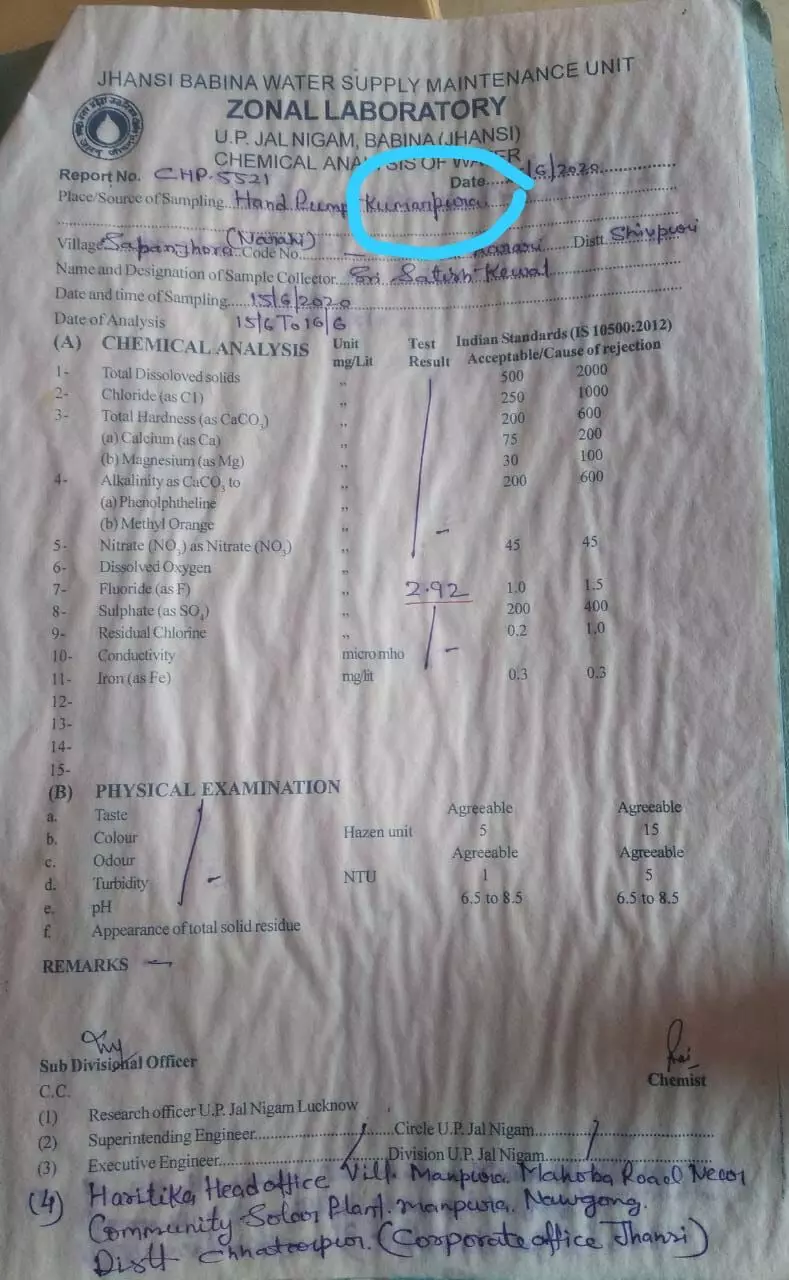
“My legs and knees hurt when I walk. Kabhi kabhi chatak se jaat hai lagat hai abhi gir padengey,” Lali, who hails from Narahi village, told Gaon Connection. (There is a cracking sound in my knees at times and I feel I will collapse.)
“Last year, I visited the doctor. I spent two three thousand rupee in the treatment, but had no relief,” she added.
“Since fluoride contamination is not visible, people continue to drink that water,” Gujarat based Sunderrajan Krishnan, who works with India Natural Resource Economics and Management (INREM) Foundation, told Gaon Connection. The Foundation works on the issues of water quality in rural areas.
“In Madhya Pradesh, which is the central part of India, there is crystalline granite formation where fluoride has been found in high levels. Almost all districts in MP are fluoride affected with twelve of them having particularly high concentrations of fluoride,” said Krishnan who has been working to minimise the impact of water-borne diseases in Madhya Pradesh since 2010.
Long march in search of water
In the blistering heat of April when mercury hit 43 degrees Celsius, rural women in Shivpuri were marching to find water in the rocky terrain. And, the water they do find is contaminated. But they have no choice but to fetch that water home and offer it to their families.
“Quality and quantity of water are two problems people face here. In Shivpuri district, upto twenty villages [of the total 100 villages] in Karera block are contaminated by fluoride,” Avani Mohan Singh, who works with Jhansi (UP)-based non-profit Haritika, told Gaon Connection.
Singh said water accessibility is an issue especially in districts such as Panna, Chhatrapur, Damoh, Sagar, and Katni. Three days back, on May 16, Gaon Connection published a ground report on how forest villages in Panna district struggle for water.
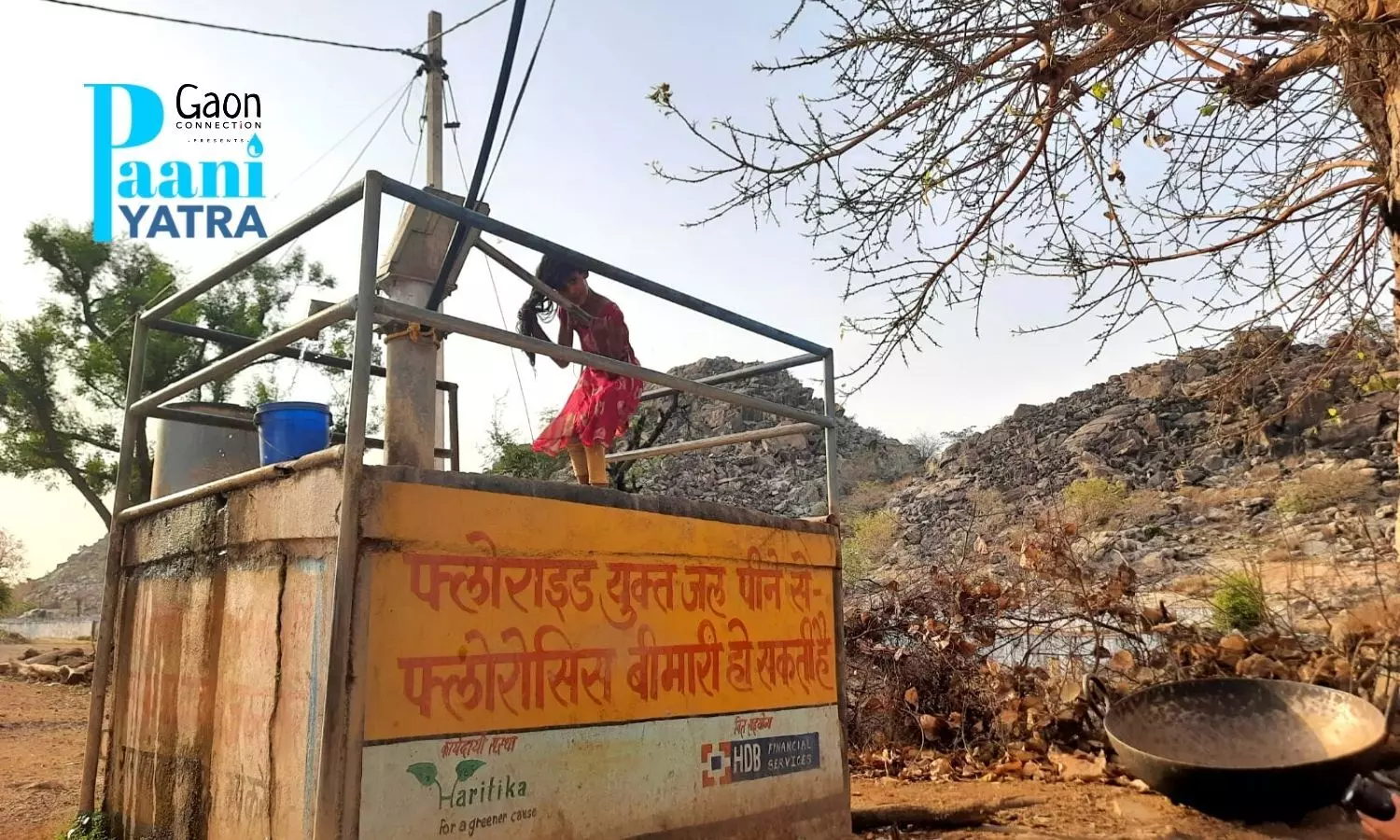
The 500 odd residents of Ghasarahi are dependent on two hand pumps in the village. Incidentally, the water is contaminated by fluoride. Photo: Shivani Gupta
“In summers, women and girls trek three to five kilometres to fetch water in Panna district,” said Singh, who has been working on issues affecting the rural poor for the past 27 years in Uttar Pradesh, Madhya Pradesh, Maharashtra, and Rajasthan.
In 2019, in a bid to lighten the water burden of rural women and girls who are often forced to walk several kilometres a day to fetch water for their families, the central government launched the Har Ghar Jal scheme under the Jal Jeevan Mission. This central scheme promises to provide each and every rural household with a “functional tap water connection” in the next two years, that is by 2024.
The 500 odd residents of Ghasarahi village are waiting for the promised tap water connections but for now are dependent on two hand pumps in the village.
Data from the Jal Jeevan Mission shows 27.59 per cent of rural households in Shivpuri district of Madhya Pradesh have tap water connections, as of May 19, 2022.
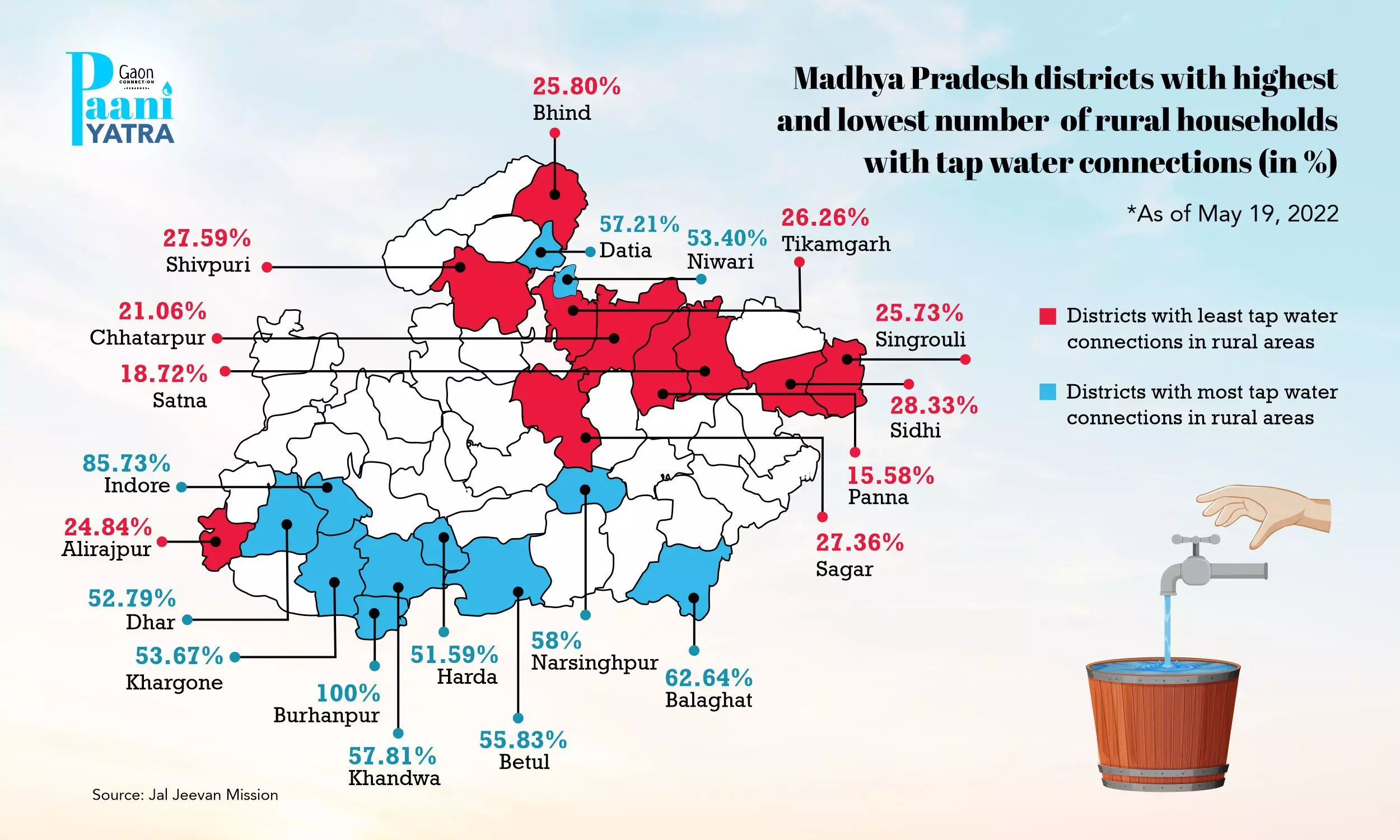
At 40.53 per cent, Madhya Pradesh is among the ten worst states that have less than the national average of tap water supply in India. According to the Jal Jeevan Mission, 49.42 per cent of rural households in the country have tap water connections.
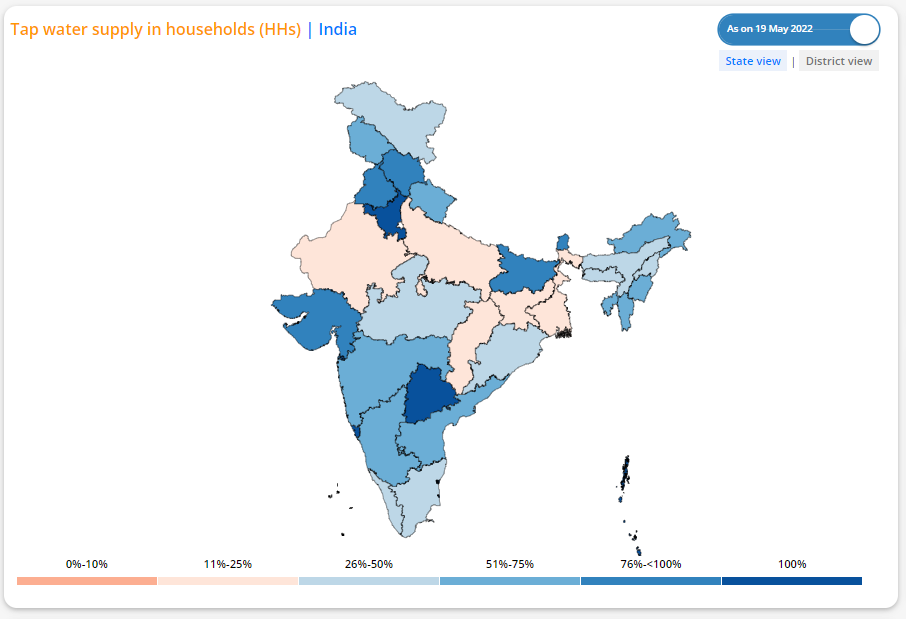
“In schemes like the Jal Jeevan Mission, water security is vital as we are planning to supply it to a vast majority, ” said Krishnan. Apart from the natural presence of fluoride in underground rocks, water sector experts also blame overexploitation of groundwater resources for the water crisis in the state.
“Unlike the water table in other regions, water here moves in fractured aquifers. Rock formation is also different. For instance, granite rock formation is found in Shivpuri while sandstone and cell rock formation in Damoh. Cell rock absorbs water and hence water availability is less on the surface,” explained Singh of Haritika NGO.
According to INREM’s Krishnan, “When water flows through rock and soil, its chemical composition changes. Good minerals such as calcium along with fluoride leach into water. But this takes hundreds of years.”
“However, contamination caused by pollutants from industries, excessive use of fertilisers in soil also expedite leaching. So leaching that was to happen over hundreds of years happens in a year as well,” he added.
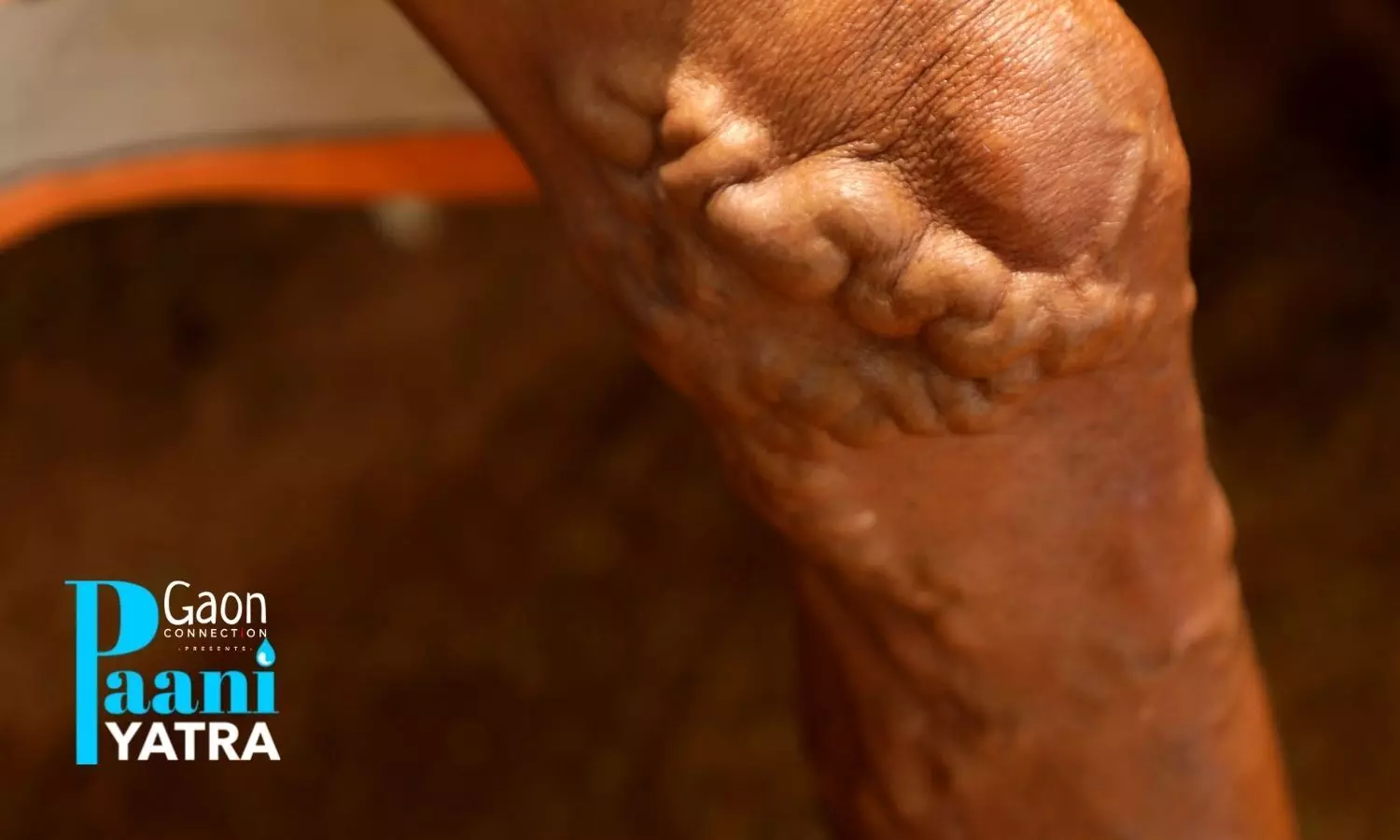
We met villagers who had enlarged (varicose) veins commonly appearing in the legs causing aching pain and discomfort. Experts say this is due to prolonged standing and pressure in lower abdominal. Photo: Yash Sachdev
Fluoride’s irreversible health damage
As per the official data, at least 10,615 habitations with over 8.5 million people are exposed to high fluoride in their water. Sandeep Tiwari, head of the department, trauma surgery, King George’s Medical College, Lucknow said fluoride contamination posed a serious health threat.
“Abdominal cramps, dental fluorosis, skeletal fluorosis, muscle weakness occur as a result of regularly consuming excess fluoride water. Bones and ligaments become weak and chances of pathological fractures increase. Such chronic diseases where joints have been affected cannot be reversed,” Tiwari told Gaon Connection.
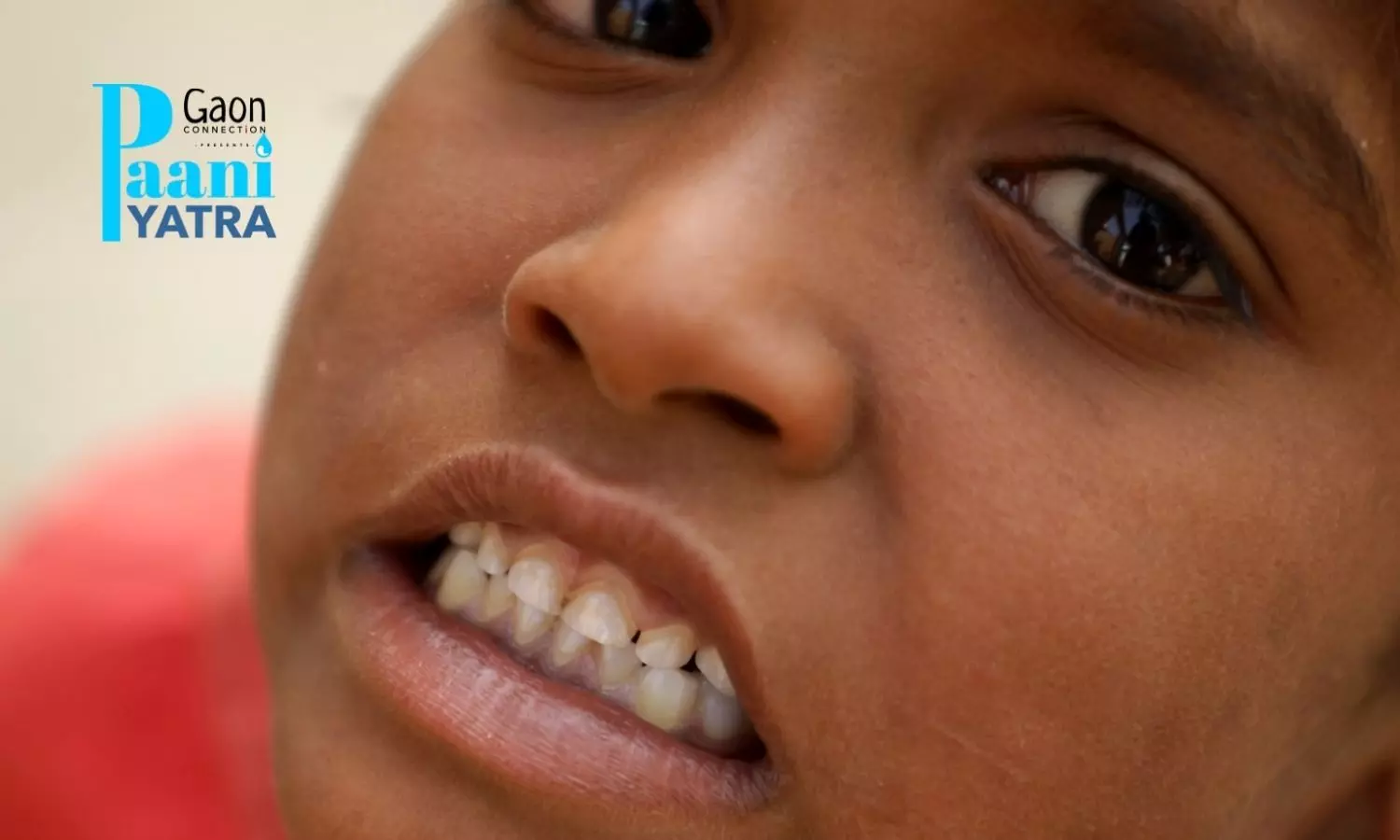
Dental fluorosis causes changes in the appearance of tooth enamel. This condition affects under-8 kids in teeth forming years. Photo: Yash Sachdev
“Ten to twelve years of constantly drinking fluoride water can lead to deformity in the spine as well, sometimes leaving the person unable to walk,” the head of the department warned.
Sometimes surgery is the only way out to deal with the problems, the surgeon said. Malnutrition also aggravates the problem.
The recent National Family Health Survey (NFHS)-5 revealed that 89 per cent of children between the formative ages of 6-23 months do not receive a “minimum acceptable diet” in the country. In Madhya Pradesh, only nine per cent children receive an adequate diet, lower than the national average of 11 per cent.
“This is why all departments including the Public Health Engineering Department, Integrated Child Development Services, agriculture and forestry need to come on a common platform to address such issues,” said Krishnan.
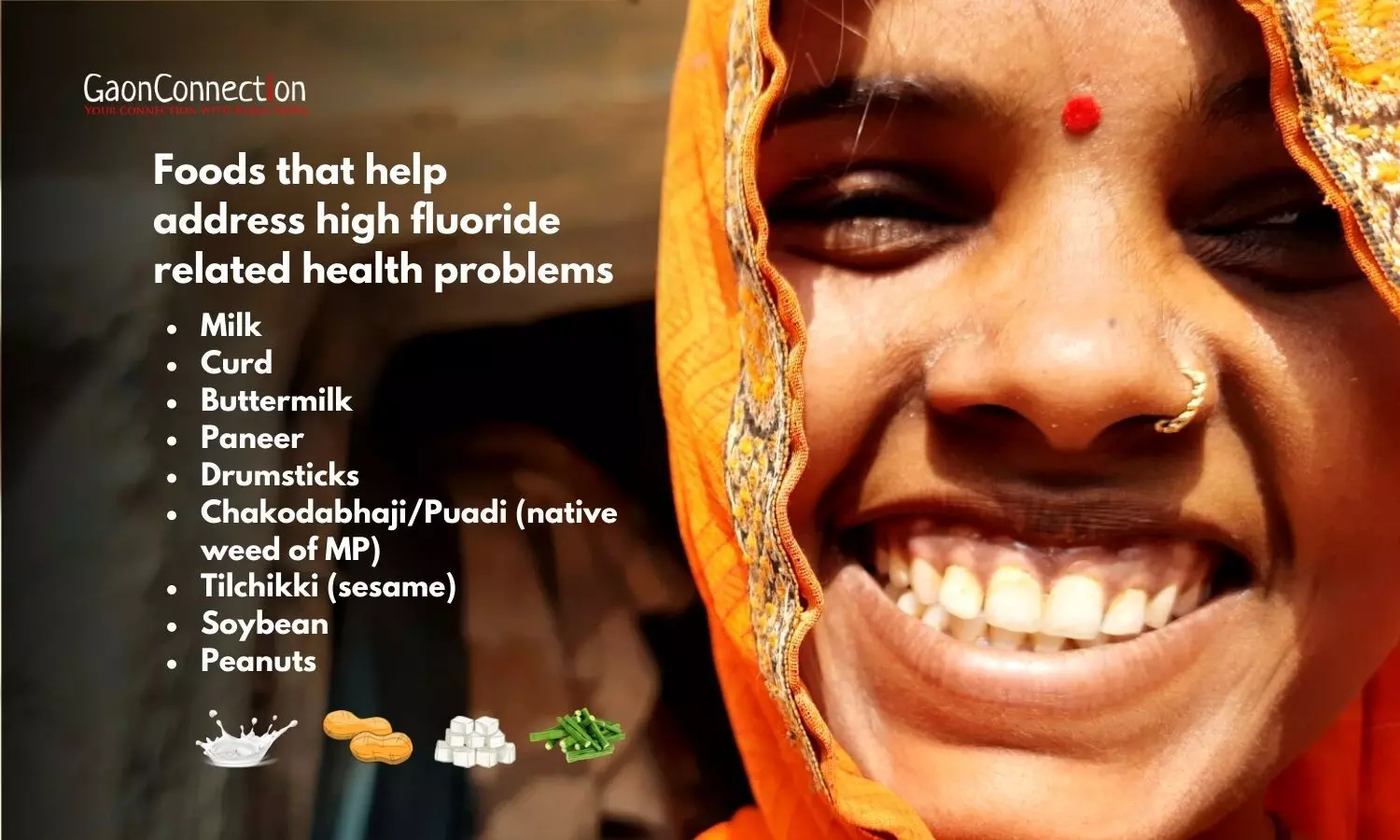
Fluoride removal plants
“The governments must intervene and install filters in hand pump mouths. This would remove fluoride content from water. We have seen such handpumps in Sonbhadra district of Uttar Pradesh,” said Tiwari.
A nonprofit Haritika has set up five fluoride removal plants in Shivpuri district each with a capacity of 500 litres each. It has also set up RO (reverse osmosis) plants in Shivpuri district including Silarpur, Ghasarahi, Sapanjhora, Tal Ka Dera.
“In absence of an alternative source of safe water, contamination removal units can be set up. These plants have a chemical that absorbs fluoride content from water,” said Avani Mohan Singh from Haritika. Each plant, which runs on solar energy, costs about Rs 200,000 to set up.
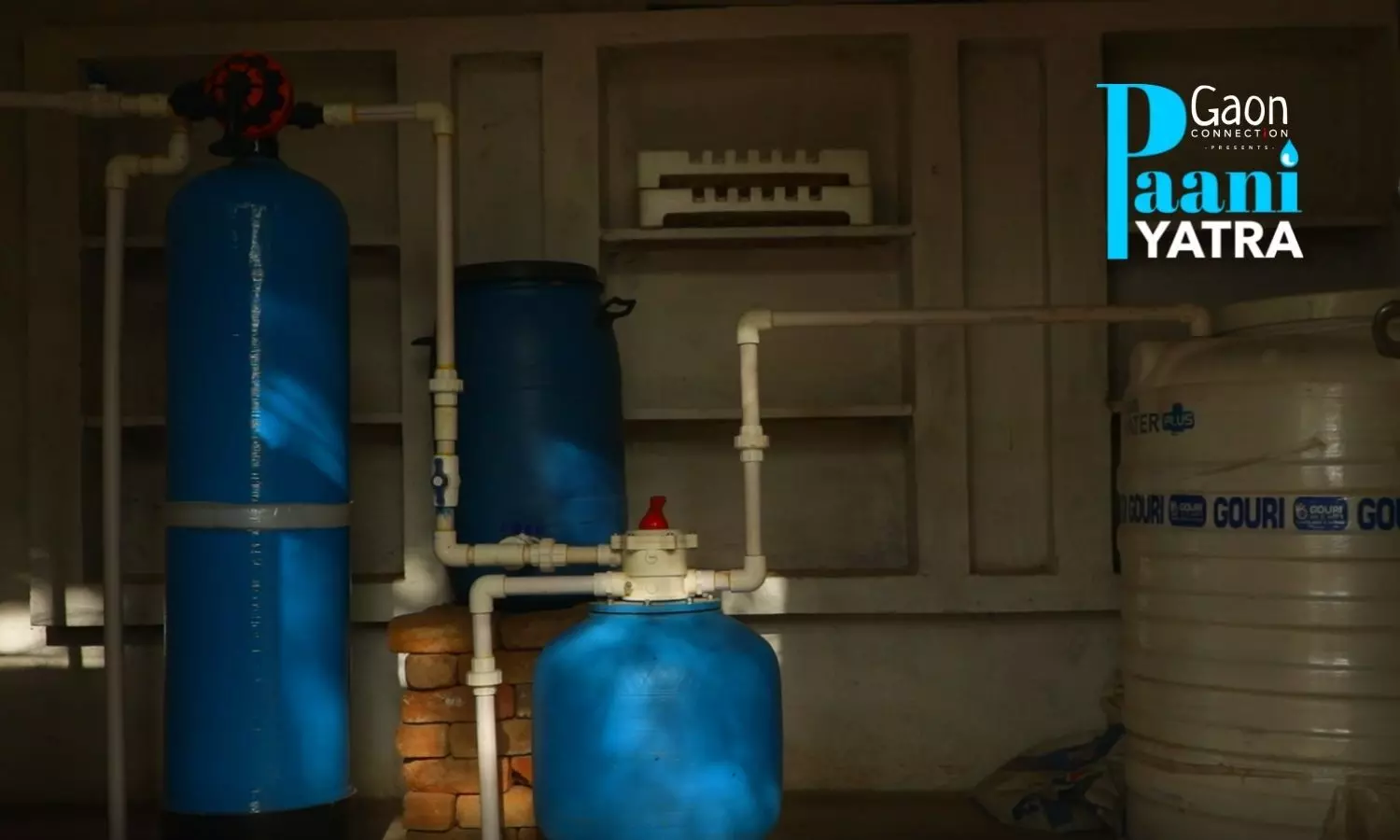
As of now, villagers in Ghasarahi and Narahi have spent Rs 1,000 as one time payment to get tap connections and avail water facilities from these fluoride removal plants set up by the non-profit. Water from these plants is sold at Rs 5 per 20 litres.
Apart from providing safe drinking water, these plants have also benefited rural women. “As water is easily available through taps installed as part of these units, women and girls now get water at home. They have additional hours to do productive work, girls go to schools,” smiled Singh.
Based on his experience in Madhya Pradesh, Krishnan said fluoride removal plants have come to the aid of villagers suffering from bone deformities. “Reversal is not possible if somebody is affected by fluorosis. But, we have seen improvement in the bones of even seventy and eighty year olds, when the water sources have been cleaned up. We need to act in a holistic manner,” he concluded.



